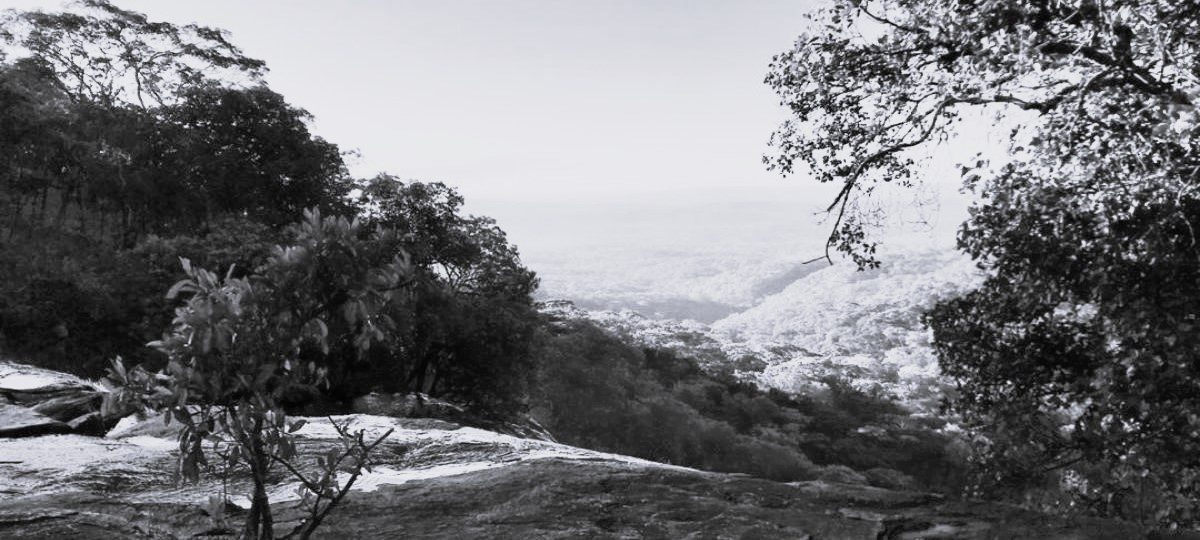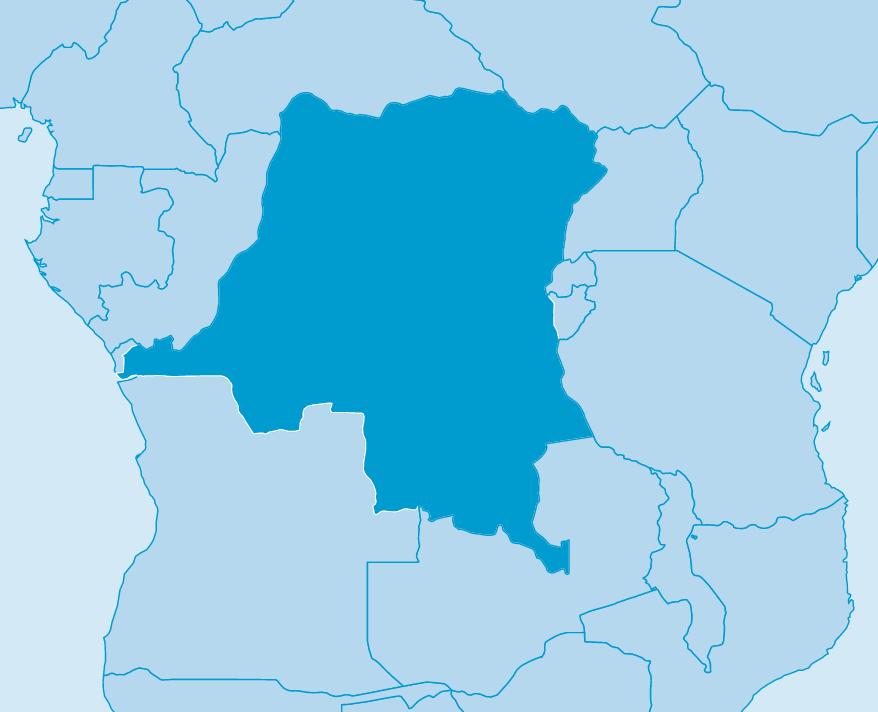The Upemba-Kundelungu National Park Complex in southeastern DRC is made up of two national parks, Lake Upemba (founded in 1939) and Kundelungu (1970), supplemented by a number of connecting zones and four neighbouring hunting reserves. The vast area, approximately as big as the Netherlands, was originally home to incredible natural riches: large populations of elephants, buffalo, lions, leopards, black rhinos, zebras and antelope, which occupied a varied landscape of lakes, waterfalls, forests and savannah.
Threats to wildlife
The national park status, however, did not appear to offer much guarantee. Poachers were able to operate in the area for years, due to the generally unsafe situation in the region and insufficient enforcement capacity. Today, the large predators have virtually disappeared, just like the black rhino. Of the circa one hundred thousand elephants that once roamed this area, just two hundred are left.
Tina Lain – IUCN NL‘Lake Upemba has almost been emptied of its fish by local fishermen. In addition, illegal farming and mining ventures take place and there are plans to build a hydropower plant inside of the protected area. Time has almost run out. Nevertheless, there are great opportunities too.’
Public-private partnership supported
In July 2017, the NGO Forgotten Parks Foundation signed a fifteen-year contract with the Congolese government agency ICCN, to manage and develop the Upemba-Kundelungu Complex. IUCN NL has supported this public-private partnership through two projects. One was developed to professionalise park management and the second to make fishing on Lake Upemba more sustainable in association with local fishermen.
Professionalising park management
With the first project, FPF and IUCN NL laid solid foundations for the management and long-term development of the Upemba-Kundelungu Complex, allowing the organisation to keep growing in terms of investment, capacity, law enforcement and strategic partnerships in the region. During this phase, we focussed on three interventions: building a strong management team and corresponding organisational structure, setting up a transparent system of financial management and accountability and recruiting and training new people, with unambiguous job descriptions. “This often concerns very specific activities,” explained Tina Lain, at the time senior expert on environmental justice at IUCN NL. “For example, the new HR manager compiled an inventory of the workforce and established tasks, responsibilities and remuneration. In addition, a series of new, young rangers was recruited locally and trained. You can see that they are genuinely proud of their uniform and their job.”
In the last part of the project, a research project carried out by the University of Lumbumbashi was supported. Through this the management of the park became more strongly connected to conservation science, as, for example, on of the researchers was asked to advise the park management. In addition, a new generation of researchers was able to make important steps in their career through this part of the project.
Sustainable fishing with local entrepreneurs
The population around the lakes in the region largely depends on fishing. However, the majority of the 80,000 fishermen used to fish independently and unregulated, in the shallows along the shore, the nursery habitat for many fish species. The result: fish stocks plummeted and the protein intake of the local population decreased, as did the fisherman’s income. Lain: “Organisation is key here. We help local fishermen to get organised and set up a sustainable form of fishing. We also gratefully use our experience and our network in Lake Edward in Virunga.”
Experience from Virunga
In 2019, a group of six fisher foremen and representatives of NGOs from Lake Edward came to Lake Upemba. These peer advisers drafted an inventory of the situation in the lake and shared their insights, experiences and solutions with local fishermen. Lain: “It was a success. Soon after, the fishermen of Upemba formed a union that makes mutual agreements and monitors compliance, for example during a temporary fishing ban. The result: illegal fishing markedly decreased in a short space of time. A new type of fishing boat was tested to replace the older, unsafe boats. The long-term objective is that fishermen will go to the deeper parts of the lake, where the adult fish are found. This will also improve the food security in the area.”
Next steps
Through these EU projects, we have laid the foundation for an effective management of and sustainable development for the Upemba-Kundelungu National Park Complex. In this endeavour, we sought cooperation with different stakeholders from the private sector, other parks (such as Virunga) and the donor community as much as possible, applying a multi-actor approach.
We have used a green economic zone development model, in which the conservation and restoration of biodiversity contributes to the region’s economic development. An ambition for the future is to attract large scale funds blending private capital and donor funds, as a sustainable path to very large-scale conservation. If successful, it will enable the ecological recovery and help re-opening the wildlife corridor between both parks and even countries (DRC and Zambia). Thinking beyond the models that currently exist in both conservation and human well-being; the proposed intervention will create value far beyond simple economics, or wildlife.
Our team





